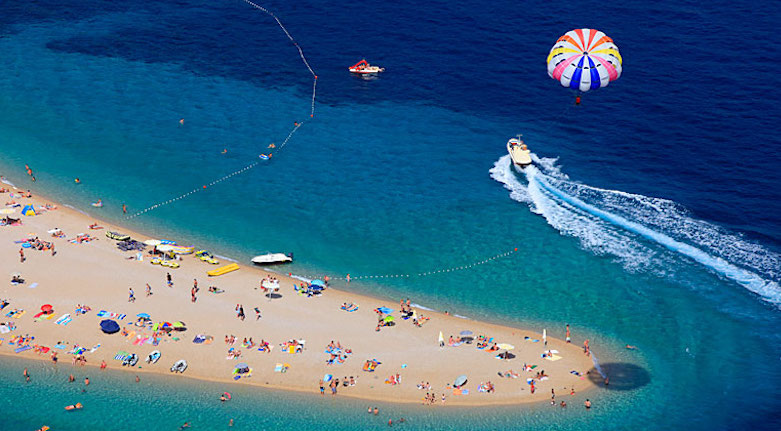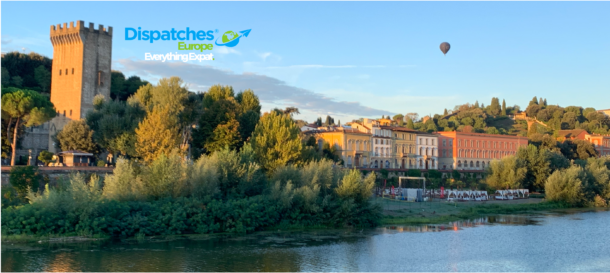(Editor’s note: This is Pt. 2 of a three-part series exploring the best beaches in Europe. You can jump to Pt. 1 here.)
Planning a beach holiday this summer? Europe is the place to be, expats. There are plenty of fabulous beaches just waiting for you to enjoy, sometimes in unexpected places. What might spring to mind first when thinking about European beaches are probably warm countries such as Spain, Italy and Portugal.
You might be surprised by the fabulous beaches you find in colder countries such as Iceland. (See below.)
Our 2023 list is as comprehensive as possible, with destinations for all tastes and budgets. What they all
have in common is that they are “simply the best,” to quote Tina Turner. You will never get bored as there are many activities on the beaches themselves and, of course, the attractions of the countries where they are located.
Pack your swimwear but also your hiking shoes, a hat and sunscreen … and maybe that blazer and little black dress for dinner.
Iceland
Before we turn to warmer countries, let’s have a look at Iceland’s beaches.The Land of Ice and Fire not only has geysers, waterfalls and stunning landscapes but also a few great beaches worth checking out. Here is the most exciting, but more for looking at than for swimming or sunbathing as it is a dangerous beach.
Having said that, Iceland is definitely a destination for adventure and nature lovers, not for your Mediterranean beach goers.
Reynisfjara
Most beach-goers seek out palm trees, sun, surf, sand and piña coladas. This beach is for those who want their beaches to provide a mystical experience over a party atmosphere. On the southern coast of Iceland is the village of Vík í Mýrdal, home to one of the most beautiful beaches in the world, Reynisfjara. Black basalt sand disappears into the dark waters of the North Atlantic, enhanced by basalt columns and – during the summer solstice – the midnight sun.
National Geographic ranks Reynisfjara among the top non-tropical beaches in the world.
Reynisfjara can also be dangerous, as the Atlantic mercilessly rushes across the beach farther than one would expect in the form of sneaker waves.
There’s also the strong offshore currents which will drag those unaware to their wet and cold demise.
And, of course, Reynisfjara and Vík í Mýrdal are directly south of the Mýrdalsjökull glacier, which covers a sleeping giant known as Katla. The volcano last erupted in 1918, and is overdue to erupt in a manner that would melt the glacier, drowning both the village and beach below.
So, you might want to visit sooner rather than later.
Portugal
In Portugal with Atlantic and Mediterranean coasts, you find both, rough surfers’ beaches and relaxing sunny ,beaches. The latter are in abundance all along the Algarve from the town of Faro to the border with Spain.
Praia do Carvalho near the town of Carvoeiro.
The small beach – once owned by a captain named Carvalho, according to the locals – is accessible via a man-made tunnel containing several fossils. Once through the tunnel, the golden beach and sapphire Atlantic waters welcome you with open arms during low tide; at high tide, the Atlantic rushes through the tunnel and nearby caves, spraying out through blowholes.
Praia do Carvalho’s sandstone formations include one called “the window,” formed from erosion over the years. The formations are also perfect for cliff diving into the deeper waters near the beach.
And the surfer beaches, for pros and beginners?
Cascais, Cantino da Baiaand, Ericeira and a few more.
See more here about beaches in Portugal.

Croatia
Croatia is becoming an increasingly popular beach destination and with good reason. From sand beaches to pebble beaches; from windsurfing to peaceful swimming and snorkeling and even a place where clothes are optional, Croatia has it all.
Zlatni Rat
Central and Eastern Europe are blowing up as hot holiday spots, and nowhere is this more apparent than Croatia. The Central European country off the coast of the Adriatic Sea has kilometers of sun and sand for days, the perfect backdrop for the many parties and activities that make up Croatia’s nightlife.
Sometimes, though, you might want a break from the wubs. If that’s the case, pop on down to Bol on the island of Brač to check out Zlatni Rat. The white pebble beach extends south into the Hvar Channel, changing shape through a combination of tides, the strong currents of the channel and the various winds.
And speaking of winds, Zlatni Rat is the perfect spot for windsurfing in the summer month when the Mistral comes in from the west to fill the sails on its way to brushing the Mediterranean pine groves farther north of the beach. The waters are cool and clear, and while the current can be hazardous, it merely carries swimmers back to Bol.
Also: the pine grove contains the remains of a Roman villa rustica, and the western part of Zlatni Rat is clothing-optional.

Italy
The Aegean Sea, the Adriatic Sea and the Mediterranean: There is plenty of water surrounding Italy and with that, some of Europe’s best beaches. Some of my favorites are on the Adriatic Sea such as Rimini, Gabicce Mare and Catolica.
Although pretty and with wide sand beaches, all three are crowded in the summer month and they are popular with families because they are kid friendly.
Sardinia’s famous Emerald Coast is no doubt the chicest Island with perfect beaches … and high prices.
Ali del Mare, Chia
Obviously, the least touristy beaches are going to be those tourists can’t reach, or don’t know about. The Italians and French know Sardinia, but it’s no Mallorca in terms of popularity. Though it does have Costa Smeralda (see below) a magnet for the wildly wealthy, chock-a-bloc with mansions on the fabulous northern beaches.
But Sardinia, the largest Italian island after Sicily, has 2,000 kilometers of coast and a lot of nice
beaches.
The best is near Chia: With its peach-colored Caribbean-quality powdery sand and clear water. Ali de Mare always gets the top rating. Also, this is a place you can come early in the season or late in the season, the climate is that mild on the southern tip of the island.
Sicily does not come far behind and so do he islands of Capri and Ischia, the latter popular because of thermal springs and healing mud.
United Kingdom
“Are you serious?” you might ask? Isn’t it always cold and rainy in the UK? How can there be a best beach?
We told you that you might be surprised. Just look at Durdle Door’s famous arch, Ok, it might rain and it’s a pebble beach, but it’s also a World Heritage Site, one of the few in the UK.
There are a few more great beaches in the UK, in Cornwall and Wales.
Lyme Regis
Lyme Regis is a small sandy beach with a longer pebble beach, famous for the fossils
embedded in the rocks. The lovely old town overlooks the “Cobb,” a breakwater sheltering the tiny fishing harbor.
Rhossili Bay, Wales, on the Gower peninsula
Rhossili Bay has almost 5 killometers of yellow sand with shells, flat slate pebbles and an abundance of sea potatoes (a type of sea urchin). There’s also a ship wreck from the 1880’s, a real treat at low tide. Rhossili won Wale’s Best beach award in 2016 and has been described as “the super model of British beaches,” by The Independent.
––––––––––
See all our posts about Europe’s beaches here in Dispatches’ archives.
Inka Piegsa-Quischotte is an international attorney-turned-travel and lifestyle writer based in Spain. She has contributed to BBC/Travel, several in-flight magazines, TripSavvy (Spain) and TravelAwaits among many other publications.













